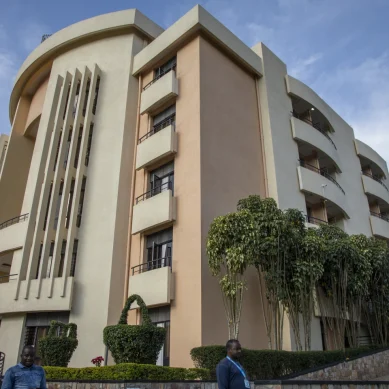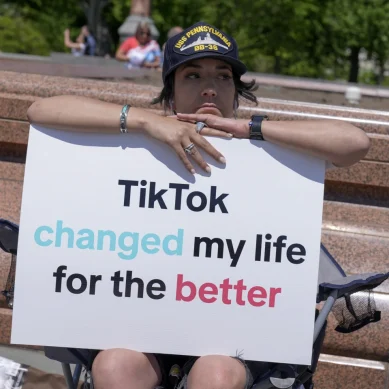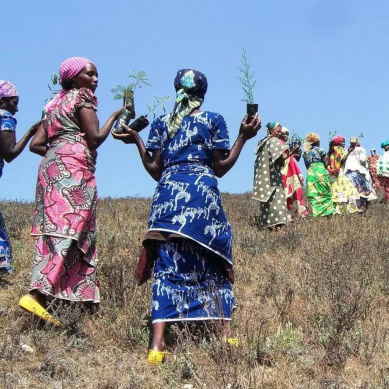
A highly anticipated Covod-19 vaccine has delivered some encouraging — but head-scratching — results. The vaccine developed by the University of Oxford, UK, and pharmaceutical giant AstraZeneca was found to be, on average, 70 per cent effective in a preliminary analysis of phase III trial data, the developers announced in a press release on November 23.
But the analysis found a striking difference in efficacy, depending on the amount of vaccine delivered to a participant. A regimen consisting of two full doses given a month apart looked to be just 62 per cent effective. But, surprisingly, participants who received a lower amount of the vaccine in a first dose and then the full amount in the second dose were 90 per cent less likely to develop Covid, compared with participants in the placebo arm.
Last week, Pfizer and BioNTech reported that their RNA-based vaccine was around 90 per cent effective after the trial reached its primary endpoint, and an interim analysis of Moderna’s RNA vaccine showed it worked roughly as well.
Researchers caution against making head-to-head comparisons of vaccines based on incomplete data. The disparity in the latest results mean there is considerable uncertainty in precisely how well the Oxford vaccine protects against Covid-19 without more data from ongoing efficacy trials, say scientists.
“We’re slightly in danger of rushing to compare apples and oranges,” says Daniel Altmann, an immunologist at Imperial College London. “There’s a long, long way to go before these data settle down and get reported and published in full.”
The Oxford–AstraZeneca vaccine is made from a cold-causing ‘adenovirus’ that was isolated from the stool of chimpanzees and modified so that it no longer replicates in cells. When injected, the vaccine instructs human cells to produce the SARS-CoV-2 spike protein — the immune system’s main target against coronaviruses.
The vaccine entered phase III efficacy trials before other frontrunners, including Pfizer and Moderna, and trials are ongoing in countries including the United States, South Africa, Japan and Russia. The November 23 analysis is based on 131 C0vid-19 cases among more than 11,000 trial participants in the United Kingdom and Brazil, up to November 4.
Overall, the developers found that the two-dose vaccine had an efficacy of 70 per cent, when measured two weeks after participants received their second dose. But that figure is an average of the 62 per cent and 90 per cent efficacy figures from the two different dosing regimens.
“90 per cent is pretty good, but the 62 per cent for the second tested regimen are not that impressive,” Florian Krammer, a virologist at a virologist at Icahn School of Medicine at Mount Sinai in New York City said on Twitter.
A top priority for researchers is understanding why the vaccine seems to have performed so much better with a lower first dose. One explanation could lie in the data: the trial might not have been big enough to gauge the difference between the two regimens and the differences will vanish once more cases of Covid-19 are detected, says Luk Vandenberghe, a virologist at the Massachusetts Eye and Ear Institute and Harvard Medical School in Boston.
The more effective ‘half-dose, full dose’ results were based on 2,741 trial participants, whereas the less efficacious arm included 8,895 volunteers. The press release did not specify in which group cases occurred.
Stephen Evans, a statistical epidemiologist at the London School of Hygiene and Tropical Medicine, estimates, based on the data, the group that the ‘half-dose, full dose’ regimen could have an efficacy as low as 66 per cent.
But, if the differences are bona fide, researchers are eager to understand why.
“I don’t think it’s an anomaly,” says Katie Ewer, an immunologist at Oxford’s Jenner Institute who is working on the vaccine. “I’m keen to get into the lab and start thinking about how we address that question.”
Ewer has two leading theories for why a lower first dose might have led to better protection against Covid. It’s possible that lower doses of vaccine do a better job at stimulating the subset of immune cells called T cells that support the production of antibodies, she says.
Another potential explanation is the immune system’s response against the chimpanzee virus. The vaccine triggers an immune response not only to the SARS-CoV-2 spike protein, but also to components of the viral vector.
It’s possible that the full first dose blunted this reaction, says Ewer. She plans to look at antibody responses against the chimpanzee virus to help address this question.
“This is a plausible explanation,” says James Wilson, a virologist at the University of Pennsylvania in Philadelphia who pioneered the use of adenoviruses for vaccines in the 1990s. By giving a half-dose first, “it is possible that AstraZeneca threaded the needle with their dosing,” he adds.
Hildegund Ertl, a viral immunologist at the Wistar Institute in Philadelphia, says results make sense in the light of some of her work on adenovirus vaccines in mice. She, too, has found that a low first dose can lead to better protection than a higher first dose in a two-dose vaccine.
She thinks this is because a lower first dose leads more quickly to the establishment of ‘memory’ immune cells that are triggered by a second-dose boost. Waiting longer between the two doses could achieve the same effect.
Meanwhile, AstraZeneca hopes to gather more data on the dosing regimen. The company has so far given the vaccine to around 10,000 participants in a US arm of the efficacy trial, which was paused for more than a month in the summer while a neurological condition in a trial participant was investigated.
The company plans to ask regulators whether it can modify the trial to include the more efficacious dosing regimen, Mene Pangalos, AstraZeneca’s vice-president of biopharmaceuticals research, said at a press briefing.
“It would be madness to use more vaccine than you needed to get less efficacy,” says Ewer. “I think we will see a move towards rollout of the ‘low dose, standard dose’ regime.”
While Oxford and AstraZeneca make sense of their trial data and gather more, there is reason for optimism in other facets of the vaccine’s performance, say scientists. No participants who received the vaccine were hospitalised or developed severe Covid, suggesting the vaccine may do a good job preventing such infections.
There were also hints that the vaccine may prevent people from transmitting the virus, even if they aren’t showing symptoms. In the trial’s UK arm, some participants routinely swabbed themselves for SARS-CoV-2 testing, even if they weren’t showing symptoms.
Differences in infection rates between people who received the placebo and the Oxford vaccine suggest the vaccine blocks transmission, says Ewer. (Pfizer and Moderna’s trials tested only people who showed symptoms.)
Even with a question mark hanging over its efficacy, the Oxford–AstraZeneca vaccine may see wider rollout than some other Covid immunisations. The vaccine is stable at refrigerator temperatures, in contrast to Pfizer and BioNtech’s vaccine which must be stored at –70 ºC until hours before vaccination.
And more of the vaccine may be available sooner, relative to other jabs. AstraZeneca estimates that it will have 200 million doses ready worldwide by the end of 2020 and capacity to produce 100 million to 200 million doses per month once production is ramped up, according to Pam Cheng, vice-president for operations and information technology at AstraZeneca.
“The battle really between all these vaccines is going to be really a logistical one,” says Vandenberghe. “We will be able to use every dose that becomes available.”
– A Nature magazine report/Ewen Callaway











